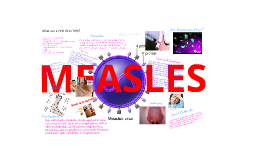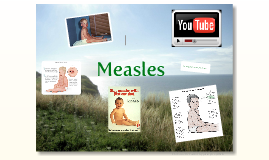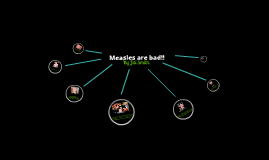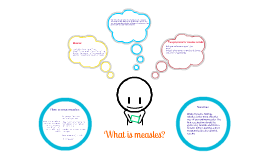measles
Transcript: measles treatments Treatment includes bed rest, lots of fluids and medicine for fever and headache. Antibiotics do not help – either to cure measles or to prevent it. There are no anti-viral drugs for treating measles. causes Measles are caused from a microbe, virus, which is transmitted through contact with a person that caught them. the transmission period where the virus is contagious is about three weeks prior to a person getting them, usually direct contact, sometimes airborne also prevention The most effective way of preventing measles is through the MMR immunisation. Most children in the UK receive the MMR immunisation, usually at about 14 months old and then in a booster at four or five years old. symptoms • cold-like symptoms, such as runny nose, watery eyes, swollen eyelids and sneezing, • red eyes and sensitivity to light, • a mild to severe temperature, which may peak at over 40.6°C (105°F) for several days, then fall but go up again when the rash appears, • tiny greyish-white spots (called Koplik's spots) in the mouth and throat, • tiredness, irritability and general lack of energy, • aches and pains, • poor appetite, • dry cough, and • red-brown spotty rash measles you can prevent it by Ella Freudenau • cold-like symptoms, such as runny nose, watery eyes, swollen eyelids and sneezing, • red eyes and sensitivity to light, • a mild to severe temperature, which may peak at over 40.6°C (105°F) for several days, then fall but go up again when the rash appears, • tiny greyish-white spots (called Koplik's spots) in the mouth and throat, • tiredness, irritability and general lack of energy, • aches and pains, • poor appetite, • dry cough, and • red-brown spotty rash Treatment includes bed rest, lots of fluids and medicine for fever and headache. Antibiotics do not help – either to cure measles or to prevent it. There are no anti-viral drugs for treating measles.

















